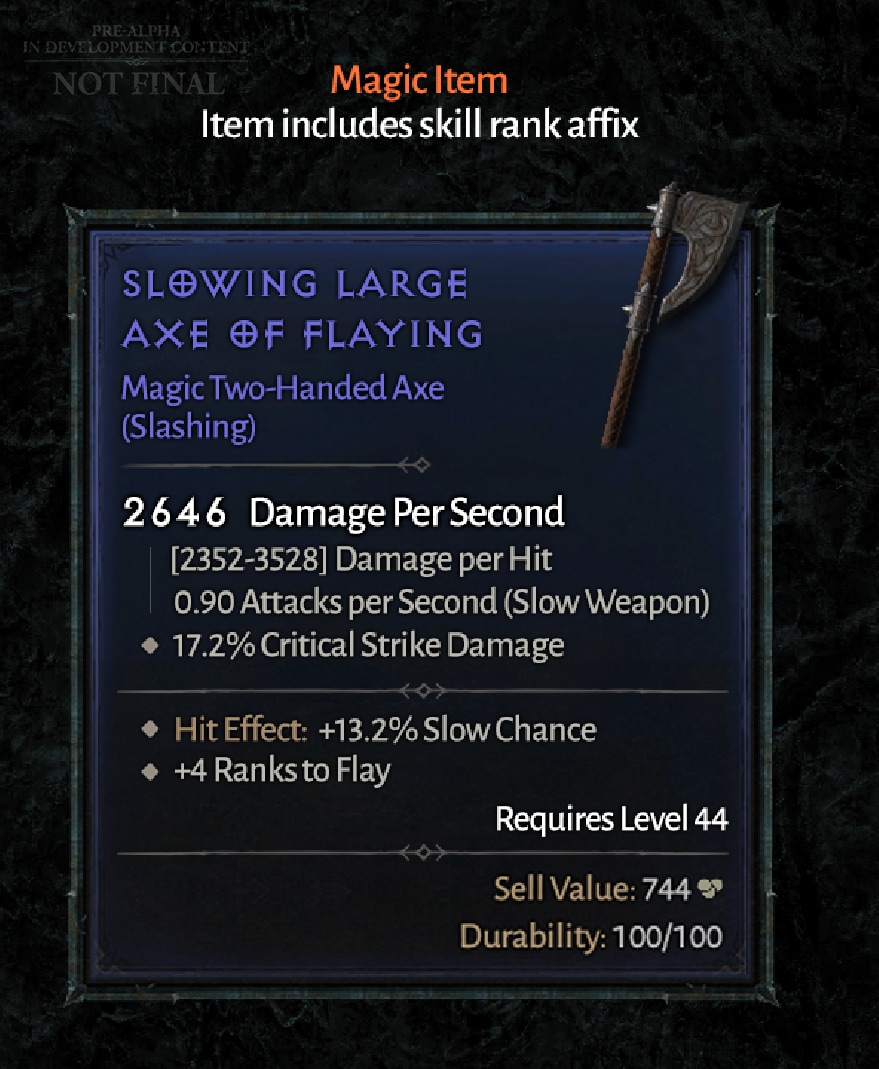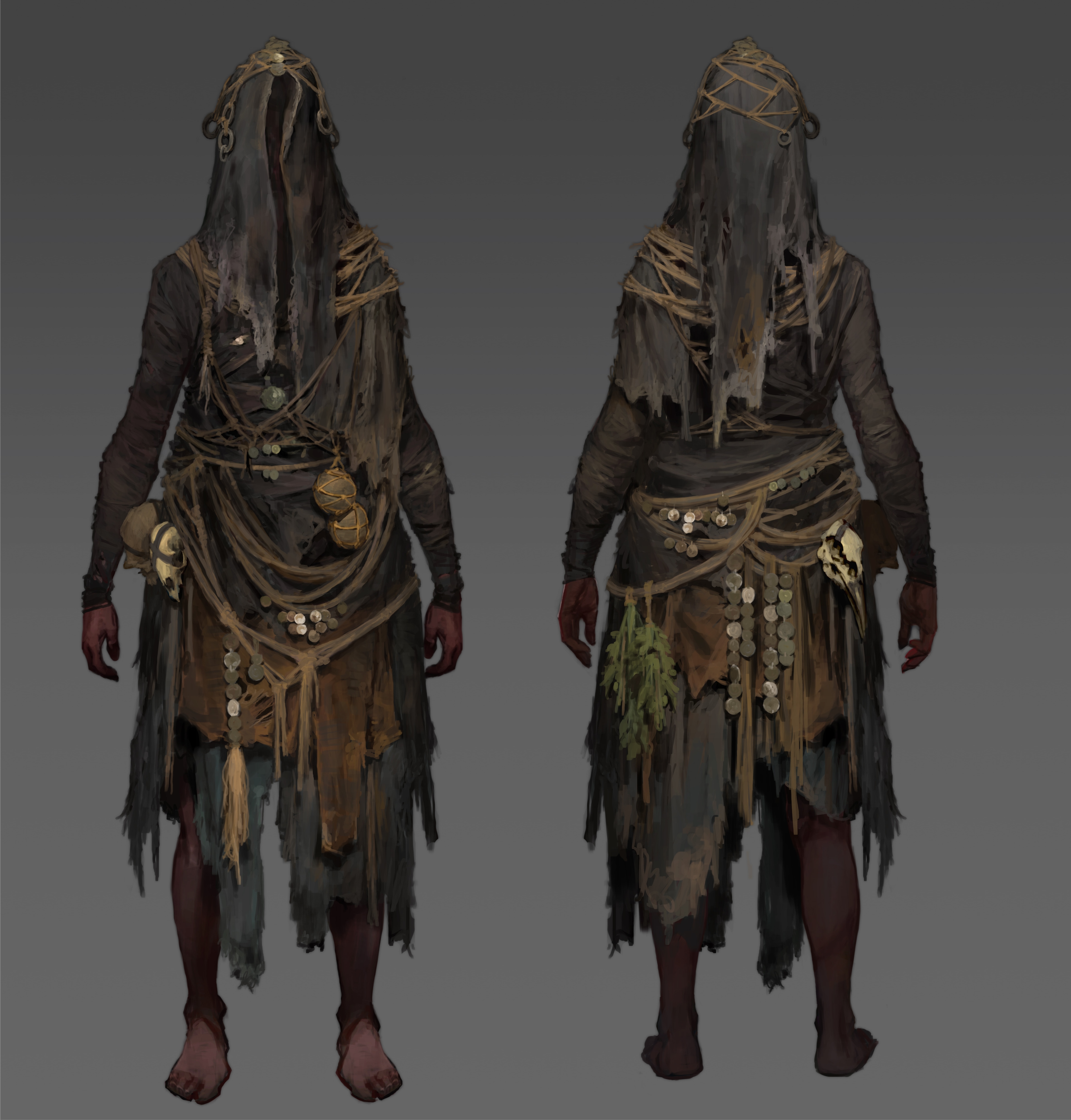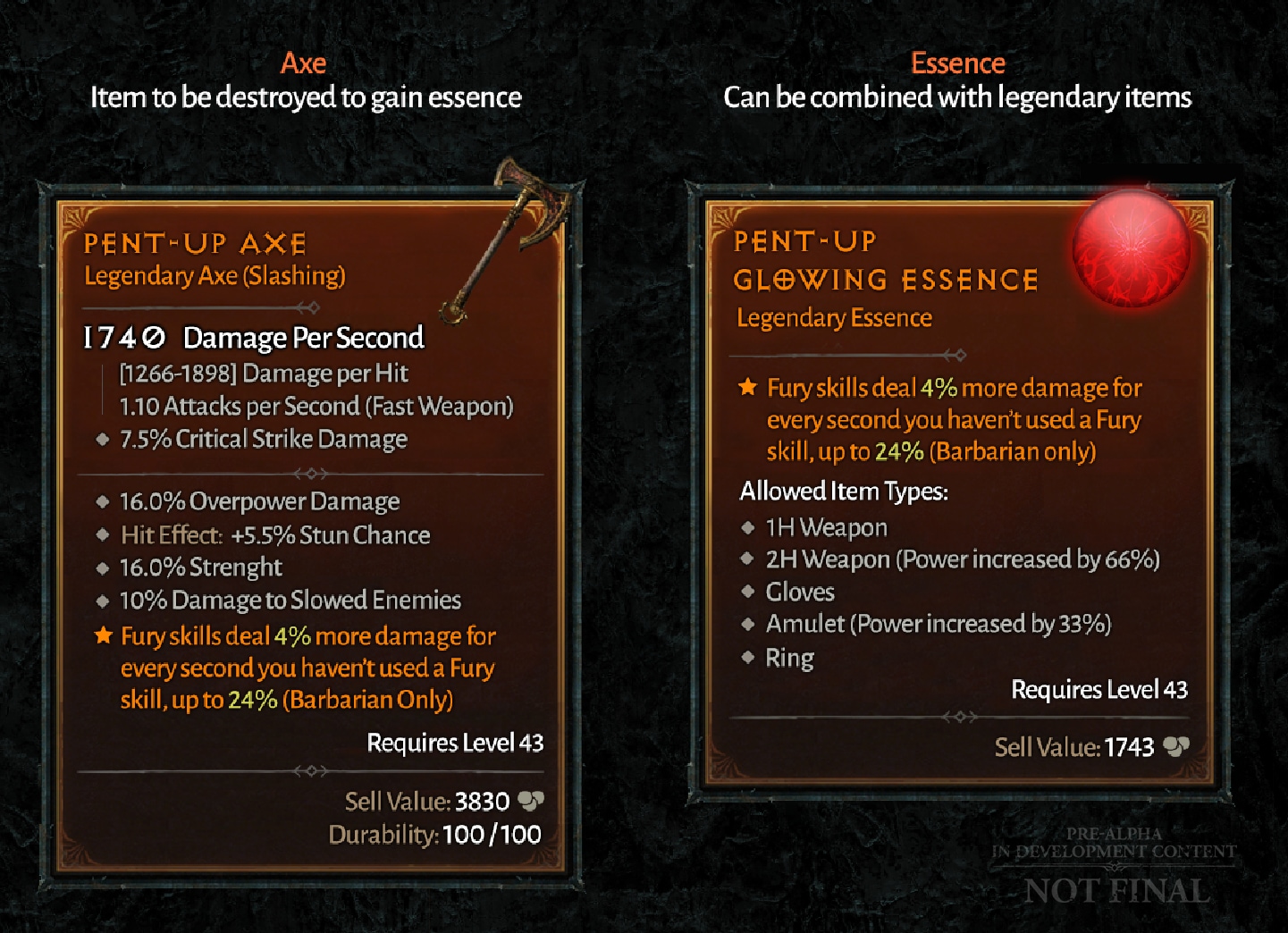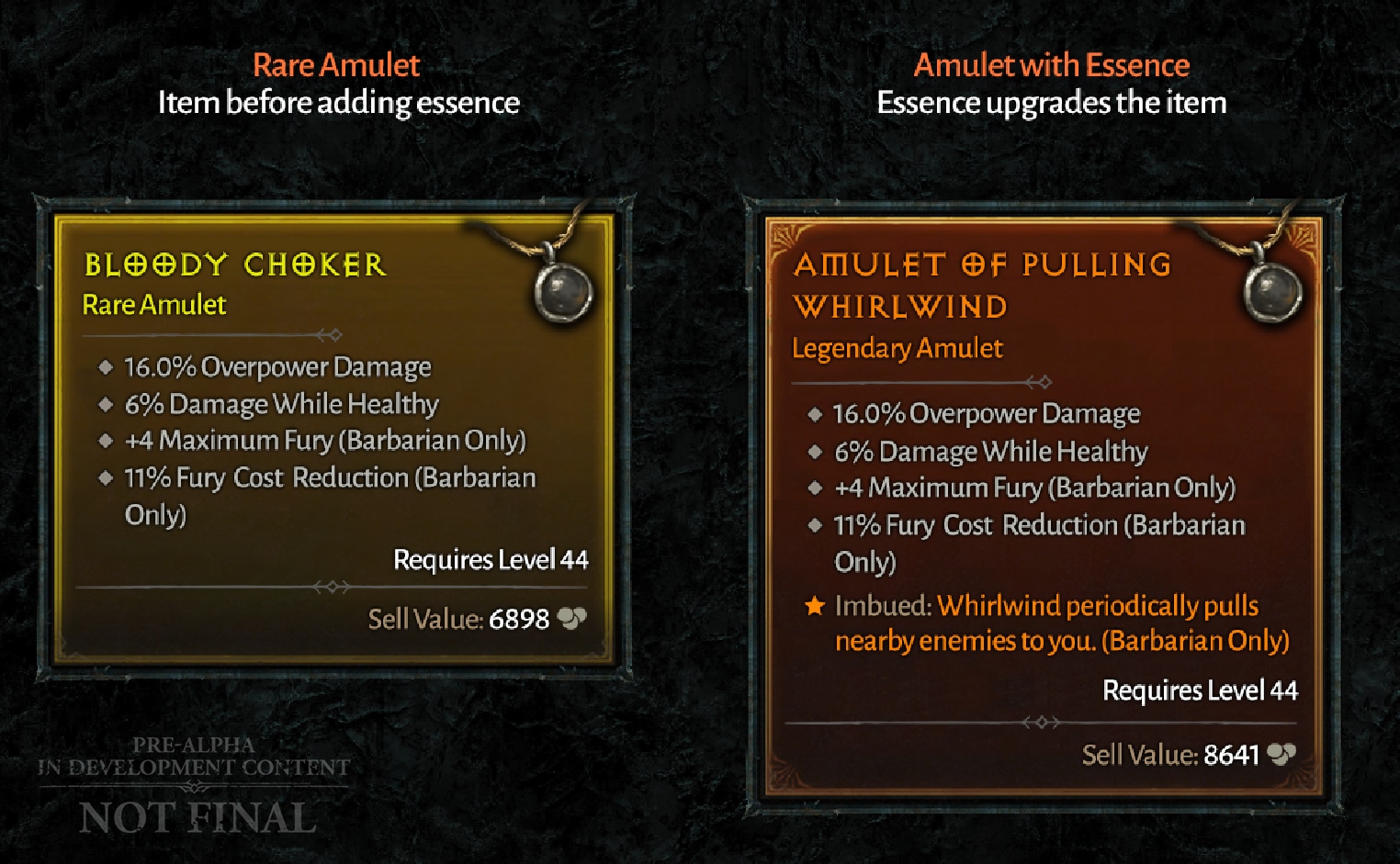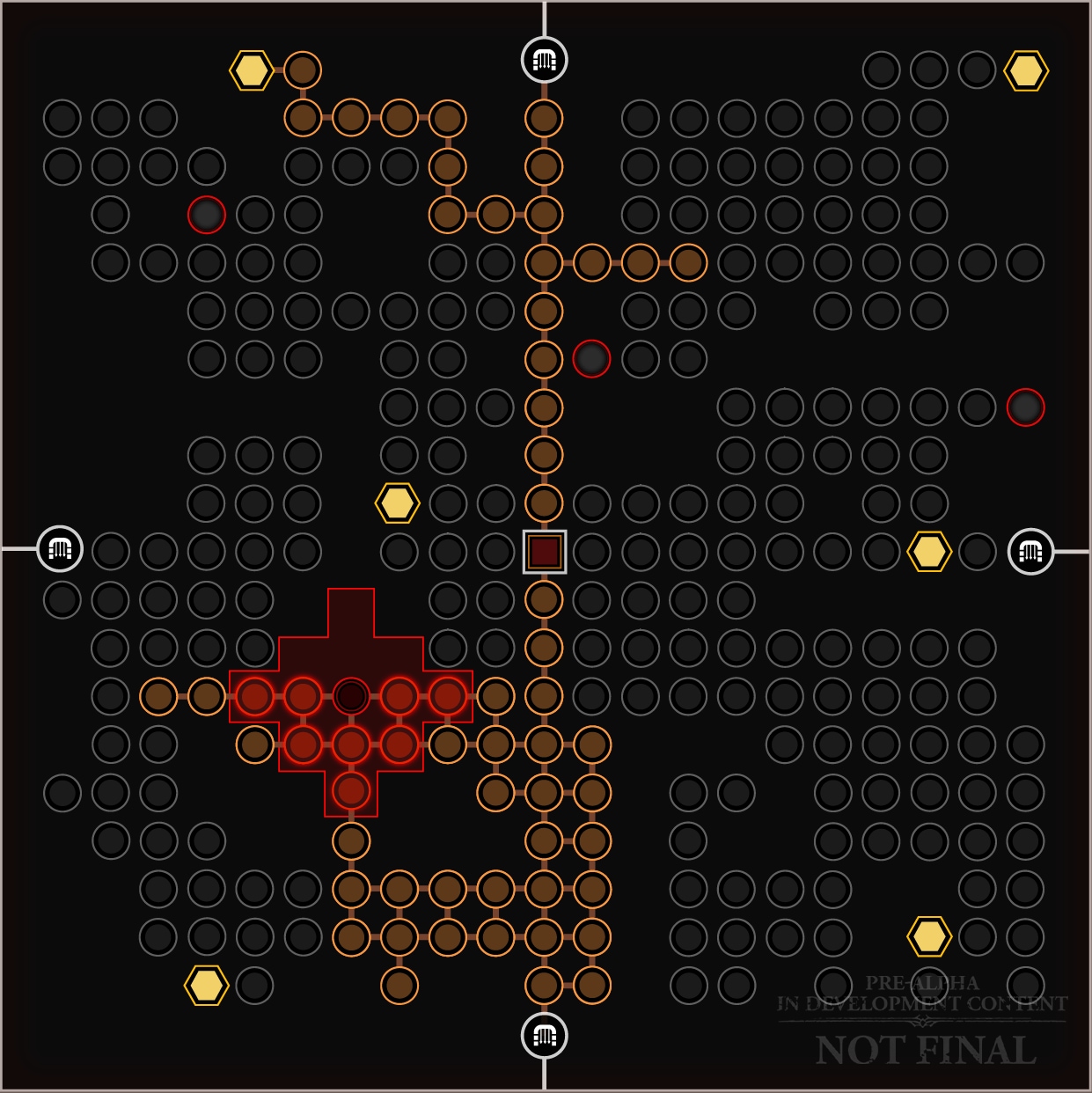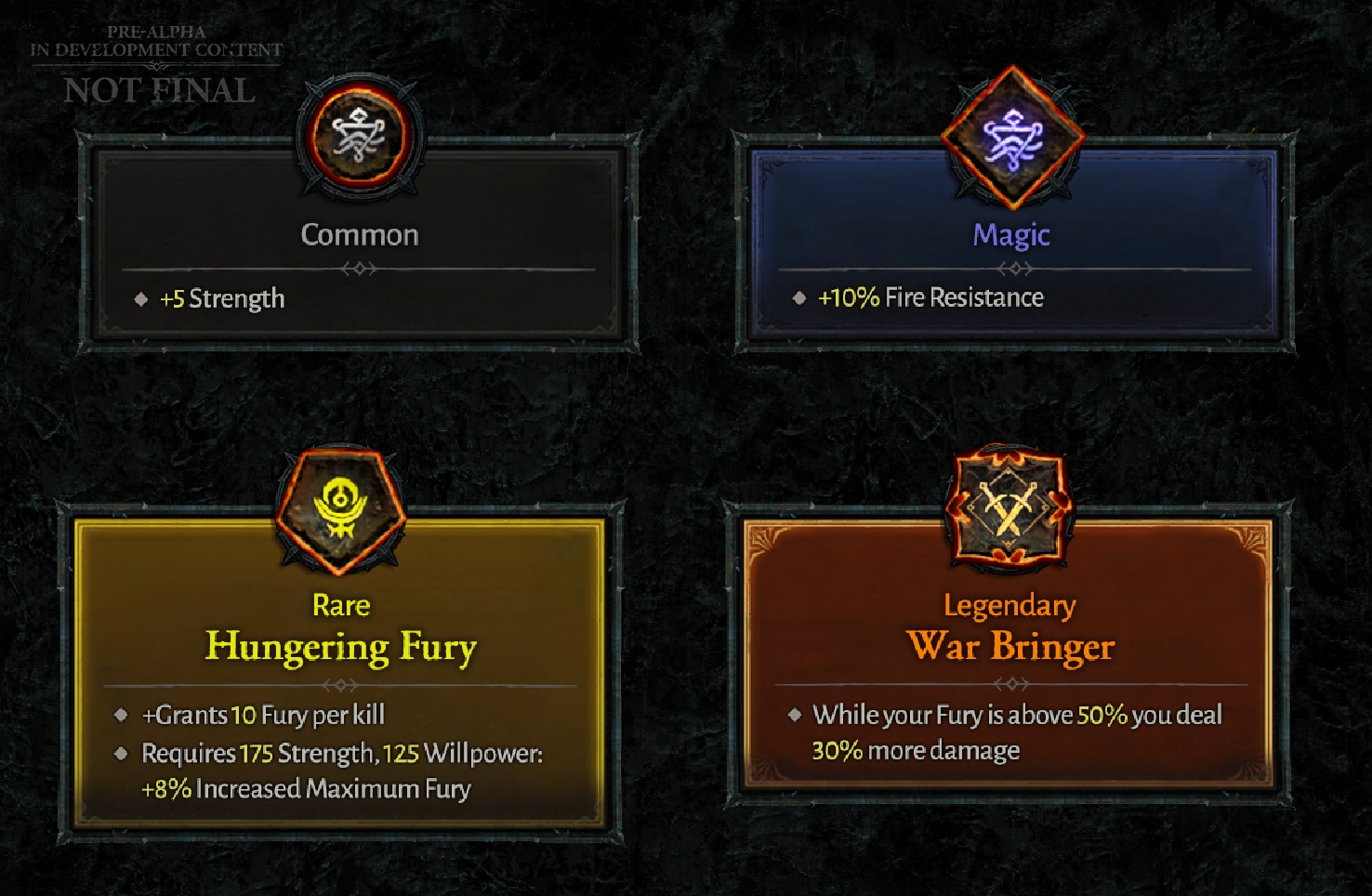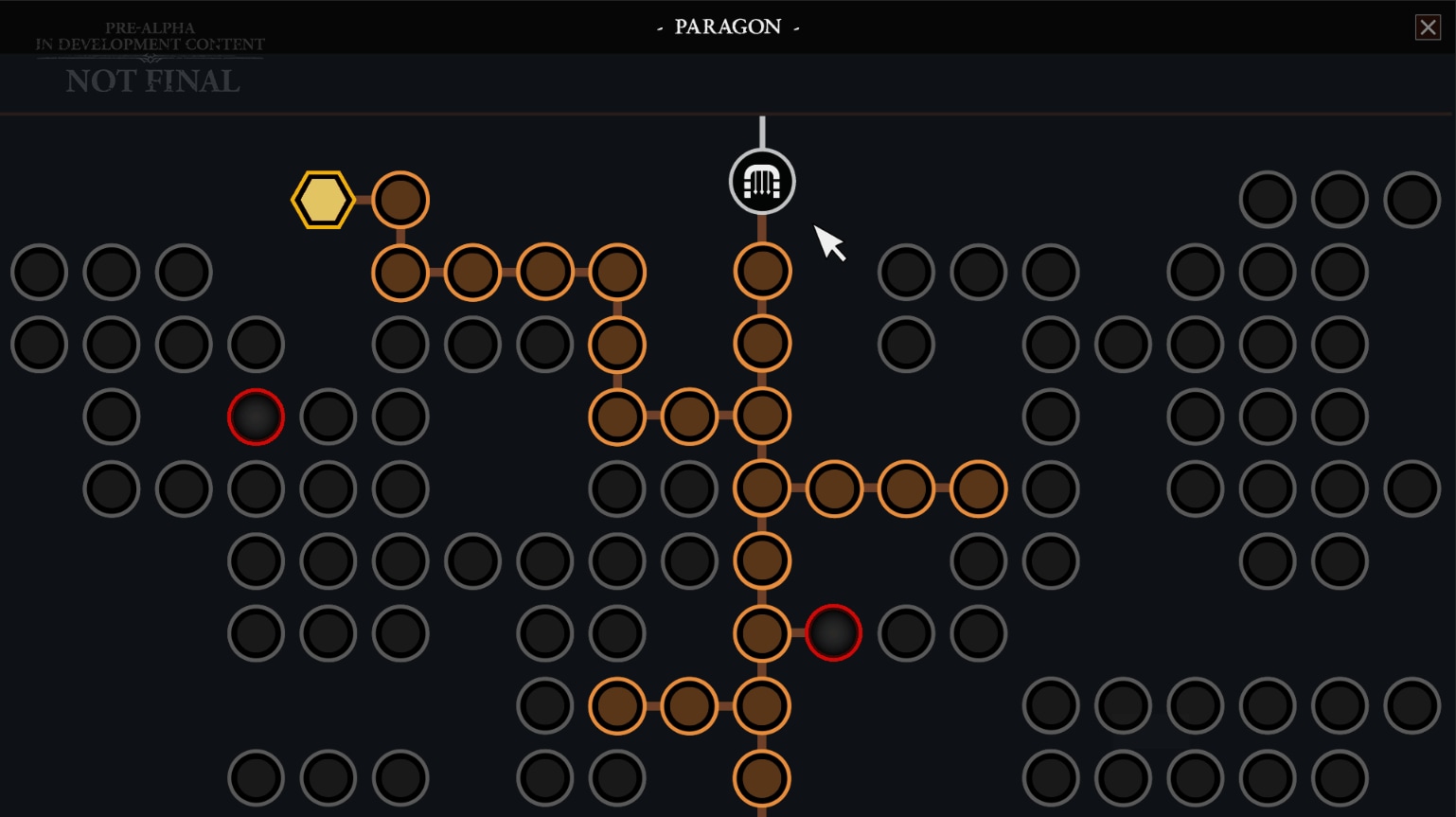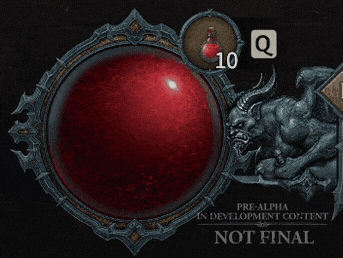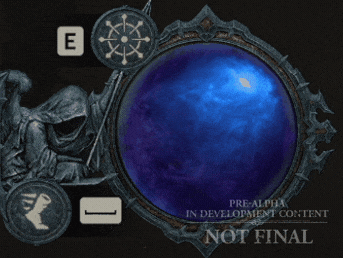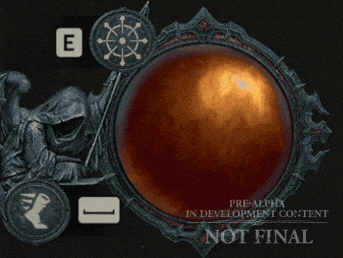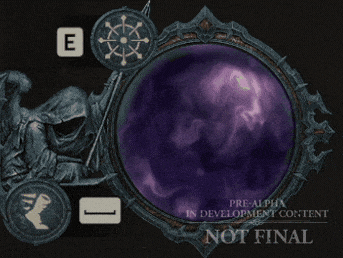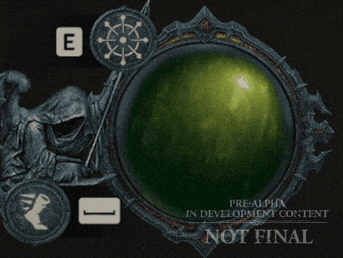Rapport trimestriel sur Diablo IV : décembre 2021
Table des matières
Bonjour et bienvenue dans ce nouveau rapport trimestriel concernant Diablo IV, qui sera également le dernier de l’année.
Nous espérons que vous avez apprécié notre article d’octobre sur la conception sonore, les musiques d’ambiance et les coulisses de la création des bruitages du jeu.
Depuis notre dernière publication, nous avons travaillé du pour étoffer le contenu et les systèmes du jeu. Et nous avons bien avancé : chaque nouvelle version s’est accompagnée d’une pléthore de contenu, de visuels, de modifications d’équilibrations et d’autres nouveautés. D’ailleurs, notre équipe est actuellement en plein test d’une version interne du jeu qui marque une étape significative du développement. Bref, nous avons beaucoup à vous dire aujourd’hui, alors passons aux choses sérieuses !
Dans un premier temps, Joe Piepiora, responsable de la conception système, nous parlera des mises à jour apportées à quelques aspects essentiels des objets : retour des compétences+, nouvelles interactions avec les pouvoirs légendaires et premiers essais relatifs au butin ciblé. Après cela, attrapez une boisson chaude et installez-vous confortablement pour découvrir le tout nouveau système de progression réservé aux personnages de niveau maximum dans Diablo IV : le plateau de parangon.
Ensuite, Daniel Briggs, responsable des effets visuels, nous racontera comment notre talentueuse équipe conçoit les explosions gigantesques et les formidables effets visuels des compétences sans sacrifier la clarté et la lisibilité du jeu, même lorsque de nombreux joueurs et monstres sont présents à l’écran. Puis nous entrerons dans les détails, et Daniel nous expliquera comment le nouveau moteur de Diablo IV a permis à l’équipe de rendre le combat plus précis et nuancé, tout en améliorant les effets visuels pour tirer parti du nouveau système d’éclairage. Enfin, vous pourrez admirer une pléthore de sorts appartenant aux quatre classes annoncées qui exploitent notre système d’effets de mort basés sur les compétences.
Nous espérons que ce rapport vous plaira et il nous tarde de lire vos réactions. Comme toujours, c’est un honneur de vous avoir pour compagnons de route. À l’année prochaine !
- Joe Shely,
Directeur du jeu, Diablo IV
Les objets de Diablo IV
Salutations, héros de Sanctuaire !
Nous sommes ravis d’être de retour pour vous donner des nouvelles du développement des systèmes et du contenu de haut niveau de Diablo IV. Je suis Joe Piepiora, responsable de la conception système, et je vais vous parler aujourd’hui de deux aspects majeurs de Diablo IV : les mises à jour apportées aux objets et nos projets pour le système de parangon.
Affixes de rang de compétence+
L’affixe de rang de compétence+ fait son retour dans Diablo IV. À mesure que vous investissez des points dans des compétences, celles-ci gagnent en puissance, et trouver des objets octroyant des rangs de compétence peut accélérer ce processus. Qui plus est, si vous vous équipez d’un objet qui confère un rang pour une compétence que vous n’avez pas encore apprise, vous gagnez l’accès à celle-ci. C’est une excellente façon de tester de nouvelles compétences avant d’investir vos ressources pour de bon. Si vous avez la chance de tomber sur un objet qui vous permet d’ajouter une compétence à votre configuration avec dix niveaux d’avance par rapport au déblocage normal, c’est un sacré coup de pouce !
Objets uniques et légendaires
Comme le disait Joe Shely dans notre rapport de décembre 2020, les objets uniques et légendaires continueront de représenter une partie essentielle de la recherche d’objets. Dans Diablo IV, nous avons apporté une modification fondamentale aux objets légendaires, puisque les pouvoirs légendaires peuvent désormais apparaître sur plusieurs emplacements d’objets. Ainsi, si vous êtes en quête d’un pouvoir comme Arts martiaux, qui améliore le coup de pied du barbare, vous pourrez le trouver sur des anneaux, des cuirasses ou des heaumes : plus besoin de rechercher un type d’objet spécifique !
La vraie question, à présent, est donc : que faire si vous trouvez un pouvoir sur une hache alors que vous auriez vraiment aimé l’avoir sur un anneau ? Ou si vous trouvez une superbe amulette légendaire mais que vous ne pouvez pas utiliser son pouvoir ? Le moment est venu de vous présenter l’occultiste.
L’occultiste peut extraire le pouvoir d’un objet légendaire et le cristalliser sous forme d’essence, ce qui détruit l’objet. L’essence peut ensuite être intégrée à un autre objet légendaire afin de remplacer son pouvoir. Les essences peuvent également être stockées pour être utilisées plus tard.
Les objets uniques, en revanche, ne peuvent pas être modifiés de cette manière, et conserveront donc leur originalité et leur côté unique, comme leur nom l’indique.
La chasse aux objets
Sanctuaire est un monde vaste dont les innombrables sentiers oubliés vous feront traverser des forêts infestées de loups-garous, des landes désolées envahies de cannibales, et des cimetières embrumés grouillant de morts-vivants. Bref, votre héros croisera la route de toutes sortes de monstres et d’ennemis. Vos différents adversaires semblent aimer collectionner certains types d’objets, que vous serez plus susceptible de remporter à l’issue des combats. Par exemple, les bandits apprécient les masses, les arbalètes et les bottes, alors si vous êtes à la recherche d’un nouveau pantalon, essayez plutôt de tuer quelques noyés !
Dans de précédentes discussions, certains joueurs se disaient déçus par le fait qu’une si grande partie de la puissance d’un personnage provienne de son équipement. Il semble moins gratifiant de personnaliser et de planifier votre personnage si cela n’a que peu d’impact sur ses performances en combat. Nous avons tenu compte de vos commentaires : Diablo IV accorde davantage d’importance à la puissance que vous octroient toutes les petites décisions que vous prenez lorsque vous gagnez des niveaux ou explorez le monde de Sanctuaire. Nous ne parlerons pas de tous les aspects de cette puissance aujourd’hui, mais j’aimerais aborder une fonctionnalité en particulier : le plateau de parangon.
Plateau de parangon
Diablo IV met l’accent sur la personnalisation de vos configurations et vous laisse libre de déterminer l’évolution de votre personnage. Le plateau de parangon, disponible pour chaque classe une fois le niveau 50 atteint, en est un parfait exemple. Votre héros commencera sa progression dans le système de parangon sur la dalle centrale du plateau de départ de sa classe ; vous sélectionnerez ensuite d’autres dalles en rayonnant vers l’extérieur. Lorsque vous aurez atteint une dalle passerelle, vous pourrez choisir un nouveau plateau de parangon à rattacher à cet emplacement. Ce système vous donnera ainsi accès à un ensemble de bonus personnalisés qui viendra renforcer votre héros, récompensa les efforts investis dans sa progression, et pourra être amélioré et ajusté continuellement au fil de vos parties.
Il y a beaucoup à voir dans l’image ci-dessous ; laissez-moi donc vous expliquer quelques-uns des aspects illustrés ici.
Le plateau de parangon comporte de nombreuses dalles fixes. À mesure que le barbare gagnera de l’expérience, il recevra des points de parangon qui lui permettront d’accéder aux dalles adjacentes. Il existe plusieurs types de dalles, que je vais vous présenter.
Dalles normales
Ces dalles de base octroient un bonus aux caractéristiques modéré, mais bien pratique. Les dalles normales sont présentes un peu partout sur le plateau et sont plutôt communes.
Dalles magiques
Les dalles magiques sont généralement regroupées à plusieurs endroits du plateau et apportent des bonus plus variés et puissants. Elles sont moins courantes que les dalles normales, mais restent tout de même assez nombreuses.
Dalle rares
Les dalles rares apportent des bonus conséquents. Lorsque vous accéderez au plateau de parangon, celles-ci représenteront des objectifs attractifs, surtout lorsque vous aurez perfectionné votre configuration au point de rechercher des atouts hautement spécifiques. Les dalles rares ont également des pouvoirs supplémentaires qui se débloquent lorsqu’un héros fait progresser un attribut jusqu’à un certain niveau ; vous devrez donc faire des choix stratégiques en évoluant sur le plateau.
Dalle légendaire
Chaque plateau de parangon après le premier comporte en son centre une dalle légendaire. Les dalles légendaires octroient de nouveaux pouvoirs légendaires aux héros qui les débloquent.
Glyphes et châsses
Une châsse est une dalle spéciale qui peut accueillir un glyphe. Les glyphes sont des objets que vous pouvez trouver dans le monde de Sanctuaire ; une fois enchâssés dans un plateau de parangon, ils confèrent divers bénéfices dont les effets dépendent du nombre de dalles actives qui les entourent.
Vous pouvez également améliorer vos glyphes en bravant certains donjons particulièrement dangereux. Améliorer un glyphe augmente son rayon d’effet, ce qui lui permet de tirer son pouvoir d’un plus grand nombre de dalles actives ou d’en renforcer davantage.
Dalles passerelles et sélection de plateau
À chaque extrémité du plateau de parangon se trouve une dalle passerelle. En progressant sur le plateau, vous finirez par atteindre une dalle passerelle, qui, une fois débloquée, vous permettra de sélectionner un nouveau plateau de parangon à rattacher à l’actuel. Chaque plateau comporte un agencement de dalles unique, de nouvelles dalles magiques et rares, ainsi qu’une dalle légendaire en son centre.
Ces passerelles permettent d’étendre votre plateau de parangon. Lorsque vous aurez fait votre choix dans la liste, vous pourrez placer votre nouveau plateau pour le relier à la dalle passerelle récemment débloquée. Si vous le souhaitez, vous pourrez aussi faire pivoter votre nouveau plateau.
Nous travaillons dur pour développer ces fonctionnalités, ainsi que d’autres qui seront abordées dans de futurs articles. Mais pour l’instant, c’est tout pour l’équipe des systèmes ! Merci de nous avoir lus, et n’hésitez pas à nous faire part de vos commentaires sur les réseaux sociaux, sur Reddit ou sur nos forums ! À bientôt en Enfer !
Les effets visuels dans Diablo IV
Merci de nous avoir rejoints ! Je m’appelle Daniel Briggs et je suis le responsable des effets visuels de Diablo IV. L’équipe des effets visuels participe au développement de nombreuses fonctionnalités du jeu, mais aujourd’hui, nous allons nous concentrer sur notre contribution en matière de combat. Les graphistes des effets visuels travaillent avec les concepteurs et le reste des équipes artistiques pour donner des identités thématiques fortes aux classes de héros et donner vie aux monstres du jeu afin d’offrir aux joueurs les des combats intenses et sanglants qu’ils attendent.
Dans tous les jeux Diablo, les effets visuels font partie intégrante de l’expérience de combat. Pour Diablo IV, nous avons souhaité améliorer nos effets en utilisant la technologie de rendu physique réaliste (PBR), et renforcer les piliers fondamentaux du gameplay : personnalisation approfondie des héros, conception des objets et lisibilité des combats.
Notre approche des effets visuels
Chaque effet joue un rôle dans la composition finale du jeu. Il est essentiel de comprendre le contexte qui entoure chaque effet et la façon dont il contribue à l’expérience.
L’une des valeurs fondamentales de Blizzard Entertainment est « le gameplay avant tout » ; une idée qui sous-tend bon nombre des décisions artistiques relatives aux effets visuels du jeu. Le gameplay est le point central de la composition dans Diablo IV : il se doit d’attirer l’attention. Pour ce faire, nous devons prendre en compte toutes sortes d’éléments : compétences des joueurs, attaques des monstres, pièges, zones de dégâts, statut des personnages… Les effets de toutes ces composantes doivent être lisibles quelles que soient les zones et les conditions d’éclairage, afin que le joueur puisse saisir rapidement ce qui se passe et utiliser ces informations pour prendre des décisions en connaissance de cause.
Dans le chaos du combat, vous devrez faire preuve d’intelligence : voir apparaître un objet légendaire est exaltant, mais le ramasser est moins important que de réagir à l’attaque d’un monstre susceptible de tuer un personnage Extrême ! Notre objectif est d’équilibrer les niveaux lectures primaire, secondaire et tertiaire pour vous aider à comprendre ce qui se passe à l’écran. Pour ce faire, nous réservons les effets visuels marquants aux compétences puissantes, comme les capacités ultimes, tandis que les compétences plus faibles se fondent davantage dans le décor. Chaque classe possède des compétences plus ou moins coûteuses, longues à recharger ou puissantes. Celles-ci s’accompagnent d’effets visuels plus ou moins intenses, en fonction de la puissance des compétences.
Amélioration du combat
Afin d’améliorer le ressenti des combats, nous avons apporté plusieurs ajustements à la façon dont les dégâts sont appliqués. Dans les précédents opus de Diablo, une zone d’effet ou une compétence de mêlée était une zone de dégâts unique, appliquée à une seule image. Grâce à nos ingénieurs, nous pouvons désormais animer les zones cibles (que nous appelons des « charges utiles ») sur plusieurs images, ce qui nous permet d’aligner ces zones cibles animées sur les animations des effets visuels qui les accompagnent.
Par exemple, dans Diablo III, Trombe prend l’aspect d’une forme cylindrique qui entoure le barbare et applique des dégâts toutes les quelques images à une fréquence basée sur votre vitesse d’attaque. Dans Diablo IV, Trombe revêt la forme d’un secteur circulaire dont l’animation suit votre personnage. Les zones d’effet s’étendent vers l’extérieur avec le temps, et les coups en mêlée suivent le mouvement de votre arme. Les zones cibles animées nous permettent d’améliorer la façon dont les dégâts sont appliqués dans Diablo IV ; le combat offre des sensations plus prenantes et la physique des monstres semble plus réaliste. Les charges utiles nous offrent également la possibilité d’intégrer une subtile nuance de timing à toutes sortes de compétences.
Enfin, nous avons revu la façon dont les effets des coups s’appliquent aux monstres, afin que les impacts suivent la direction des sorts ou des attaques de mêlée. Nous utilisons les données de l’animation et de la zone cible animée pour localiser l’endroit où le monstre doit recevoir l’impact et appliquer une force directionnelle au modèle. Pour faire simple, si vous frappez un homme-bouc au genou, du sang giclera de son genou et l’effet physique l’enverra voler comme si vous l’aviez frappé dans les jambes.
Effets visuels – Sources de lumière et objets éclairés
Dans Diablo IV, nous utilisons un modèle d’éclairage PBR (rendu physique réaliste) : nos matériaux réagissent à la lumière de manière réaliste. Cette approche apporte d’énormes améliorations au niveau du rendu, mais elle peut être aller à contre-courant de ce qu’attendent les joueurs des compétences des personnages et des monstres. Par exemple, essayez de visualiser un feu de camp en plein jour : un peu décevant, n’est-ce pas ? Imaginez ensuite à quoi ressemblerait un nuage de poussière ou un panache de fumée en pleine nuit : il serait presque impossible de discerner quoi que ce soit. Pour tenir compte de ces aspects, nous avons élaboré un moteur et une bibliothèque de nuanceurs qui nous permettent d’enfreindre les règles de la technologie PBR au profit d’une touche artistique. Ce système nous permet de faire ressortir les éléments importants, tout en conservant le modèle PBR pour les éléments destinés à l’immersion, afin qu’ils réagissent de manière réaliste à l’éclairage.
Les précédents Diablo utilisent principalement des particules « non éclairées », qui ne sont pas affectées par l’éclairage de l’environnement. Celles-ci apportent offrent un contrôle incroyable sur l’aspect des graphismes : le rendu est visuel au travail de l’artiste. Les particules non éclairées ont toutefois un inconvénient : les visuels peuvent sembler trop lumineux dans des donjons sombres, ou peuvent jurer avec les couleurs de certains environnements.
Diablo IV utilise des effets visuels éclairés ; ceux-ci se fondent dans l’éclairage de l’environnement pour créer expérience plus immersive. Prenons l’exemple de Trombe (que vous avez pu voir dans la vidéo ci-dessus) : en plein jour, la lame reflète la lumière du soleil. Dans la pénombre d’un donjon, elle reflétera des sources de lumière plus subtiles, comme des torches. La poussière soulevée par la compétence est également éclairée et s’intègre de manière artistique avec le reste de l’environnement.
Si nous utilisions uniquement l’éclairage des environnements et suivions réellement les règles du modèle PBR, la lisibilité du jeu en pâtirait, surtout dans les lieux sombres, où il serait difficile distinguer les mouvements des armes. Pour y remédier, de nombreux effets visuels émettent eux-mêmes de la lumière qui se diffuse dans l’environnement. Plusieurs compétences ultimes du jeu vous permettront même d’altérer la météo et l’éclairage de l’environnement pour une durée limitée. Notre objectif est de trouver le juste équilibre entre clarté du jeu et immersion dans l’univers.
Compétences dynamiques
Peu importe la beauté des effets visuels, il est essentiel que le gameplay soit amusant. L’un de nos objectifs, lorsque nous créons des compétences, est de veiller à ce que l’équipe de conception des systèmes dispose d’un éventail de modificateurs qui peuvent être utilisés pour créer des arbres de compétences, des mécaniques de classe, des objets légendaires et des plateaux de parangon attrayants.
Vos choix ne doivent pas affecter uniquement les statistiques de votre personnage. Lorsqu’une compétence de classe nous satisfait, l’équipe des effets incorpore la possibilité, pour les développeurs, de changer de manière dynamique la taille, l’intensité et la durée d’une compétence. Vos compétences verront leur intensité visuelle augmenter à mesure que vous y apporterez des améliorations et sélectionnerez des objets qui augmenteront leur puissance.
Outre ces modificateurs, nous créons des variantes qui changent complètement la fonctionnalité d’une compétence ou le type de dégâts infligés. Ces variantes peuvent également être altérées par les modificateurs de taille, d’intensité et de durée. Avec ce système, toutes les variantes des compétences peuvent être affectées par un plus grand groupe de modificateurs légendaires. Les choix que vous ferez en matière de compétences et de points de parangon, ainsi que les objets dont vous vous équiperez, donneront à votre personnage une apparence et un ressenti différent par rapport aux autres champions de la même classe.
Toutes ces nuances sont travaillées manuellement par nos graphistes afin que les visuels restent cohérents, quelles que soient leurs dimensions et leur intensité. Nous ne nous contentions pas de modifier uniformément tous les aspects d’un effet lorsque nous changeons sa taille et son intensité ; nous ajustons son taux d’apparition, sa vélocité, son émissivité et ses couleurs afin que les graphismes se fondent parfaitement dans l’univers de Diablo.
Votre personnage aussi mérite d’avoir la classe ! Nos objets sont conçus de telle façon que nous pouvons aisément appliquer des effets à n’importe quelle arme du jeu. Vos objets légendaires ont des pouvoirs impressionnants, mais ils donnent aussi un look incroyable à votre personnage. Voici un exemple où nous appliquons le même effet de feu et de poison à plusieurs armes du jeu.
Effets de mort basés sur les compétences
Sanctuaire est un univers sombre et gothique, rempli de monstres horrifiants qui se livrent à des actes épouvantables. Pour survivre dans ce paysage lugubre, vous ne devrez montrer aucune pitié envers vos ennemis. Nous reprenons un aspect apprécié dans Diablo III : les effets de mort basés sur les compétences. Grâce à ce système, vous pouvez décapiter, trancher, geler, briser, éviscérer et brûler vos ennemis, pour ne citer que quelques exemples.
Grâce à notre nouveau modèle PBR, nous pouvons rendre le sang, les viscères et le gore encore plus réalistes en les faisant réagir correctement à l’éclairage de l’environnement. Chaque monstre possède un squelette et une structure musculaire qui nous servent à rendre sa mort encore plus brutale. Pendant le combat, votre personnage sera éclaboussé par le sang des monstres proches. Bien sûr, avec le temps, l’armure de votre personnage redeviendra impeccable.
La sorcière étudie l’art de la magie élémentaire. Elle ralentit ses ennemis avec le froid avant de les geler et de les tailler en pièces. Elle abat des éclairs étourdissants sur ses ennemis, dont les corps crépitent et grésillent. Et lorsqu’elle manie les flammes, ses ennemis s’effondrent et sont carbonisés jusqu’à l’os.
Voici quelques types de morts que la sorcière peut déclencher :
- Geler et briser – Les monstres gelés volent en éclats.
- Calciner – La foudre calcine le cadavre du monstre.
- Brûler – Brûle la chair du monstre jusqu’à ce qu’il ne reste plus qu’un squelette carbonisé.
Les barbares sont fiers de leurs capacités physiques. Leur arsenal en fait des guerriers mortels en combat rapproché. Grâce à la puissance de leur lignée ancestrale, les barbares réduisent leurs ennemis en bouillie ou les envoient voler à l’autre bout du champ de bataille. Leur force brute n’a d’égale que leur vitesse et leur férocité lorsqu’ils se déchaînent au combat et démembrent tous ceux qui ont le malheur de croiser leur route.
Voici quelques types de morts que le barbare peut déclencher :
- Écrasement – Écrase un monstre sous le poids d’un objet lourd.
- Décapitation - Sépare la tête d’un monstre de son corps.
- Couper en deux – Marrant ! :)
- Briser les membres inférieurs – La partie inférieure du corps du monstre est brisée et plusieurs de ses articulations se disloquent.
Le voleur est adroit et préfère les attaques méthodiques. Les monstres ignorent généralement sa présence… jusqu’à ce qu’il soit trop tard. Il lui suffit d’un coup de dague ou d’une flèche bien placée pour abattre la plupart des monstres. Le voleur repère le moment le plus opportun pour engager le combat, et imprègne généralement ses armes pour avoir un avantage. La magie des ombres permet certes de superbes diversions, mais ne vous y trompez pas : ses clones d’ombre sont aussi mortels que ses lames.
Voici quelques types de morts que le voleur peut déclencher :
- Éviscération – Fait jaillir les entrailles d’un monstre.
- Ombre - L’énergie des ombres draine l’essence vitale de la chair des monstres.
- Geler et briser – Les monstres gelés volent en éclats.
- Poison – La peau du monstre se dissout, laissant apparaître un amas de muscles et d’os.
- Écorcher – Arrache la peau d’un ennemi, mais sa structure musculaire intacte.
Le druide ne fait qu’un avec la magie de la nature. Il conjure les tempêtes et fait pleuvoir la foudre sur ses ennemis. Il contrôle le champ de bataille en invoquant des rafales de vent tandis que ses compagnons animaux dévorent les chairs des monstres. La magie de la nature lui permet de manipuler la terre, de la façonner selon ses désirs et de frapper les ennemis à distance. S’ils osent s’approcher, ses adversaires sont frappés par la puissance innée du druide, qui passe sans mal d’une forme à l’autre pour se métamorphoser en loup-garou agile ou en ours gigantesque.
Voici quelques types de morts que le druide peut déclencher :
- Renverser – Le monstre est écrasé par un objet en mouvement et laisse une trace de sang au sol.
- Dévorer – La chair du monstre est dévorée à grands coups de morsures féroces.
- Foudroiement – La foudre fait éclater le corps du monstre et le réduit en morceaux.
- Mutilation – La peau du monstre est entièrement mutilée et se couvre de sang.
C’est tout pour aujourd’hui ! C’est un vrai plaisir de travailler sur cette franchise, et je suis ravi d’avoir pu faire découvrir une partie du processus de développement à notre communauté.
Merci d’avoir lu notre dernier rapport trimestriel de 2021 ! J’espère que cet article vous a plu et a suscité votre intérêt ! Nous tenons compte de tous vos commentaires et nous espérons faire de Diablo IV le jeu sombre et gothique que vous attendez tous. Continuez à nous faire part de vos commentaires sur les réseaux sociaux, Reddit et les forums !
